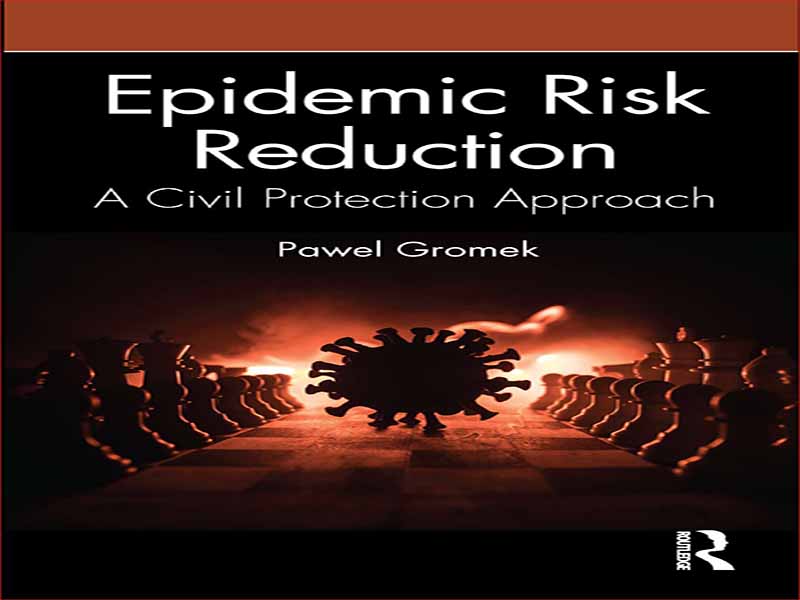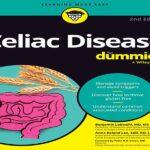- عنوان کتاب: EPIDEMIC RISK REDUCTION
- نویسنده: Pawel Gromek
- حوزه: اپیدمی
- سال انتشار: 2023
- تعداد صفحه: 309
- زبان اصلی: انگلیسی
- نوع فایل: pdf
- حجم فایل: 11.2 مگابایت
تجربه دو جنگ جهانی باعث شده است که مردم به وضوح متوجه نیاز به حفاظت سازمان یافته از مهمترین ارزش های سودمند – سلامتی و زندگی انسان، و همچنین دارایی و محیط زیست – در محدوده ای که برای بقای مردم ضروری است، پی ببرند. ایجاد و توسعه جنبش بینالمللی صلیب سرخ و هلال احمر (ICRCRCM) (IRCR، 2008)، و همچنین تصویب کنوانسیونهای ژنو، از جمله پروتکلهای الحاقی (کنوانسیون I، 1949، کنوانسیون II، 1949، کنوانسیون). کنوانسیون 4، 1949، پروتکل 2، 1977، پایه های حقوق بشردوستانه بین المللی را بنا نهاده است. درگیری های مسلحانه این به دلیل این واقعیت است که مفروضات مربوطه برای حفاظت مدنی ممکن است در ارتباط با انواع دیگر رویدادهای غیرمنتظره، شرایط اضطراری، بلایا، موقعیتهای بحرانی و بحرانهای مؤثر بر امنیت داخلی و امنیت بینالمللی نیز مورد استفاده قرار گیرد (Zwęgliński، 2020). چرخش دهههای دوم و سوم قرن بیست و یکم بدون شک با این همهگیری مرتبط است و تأثیرات آن تقریباً به تمام نقاط جهان میرسد. این بیماری به دلیل ظهور ویروسی با نام SARS-CoV-2 (سندرم حاد تنفسی شدید کروناویروس 2) در چین در پایان سال 2019 ایجاد شده است. این ویروس یکی از عوامل COVID-19 (بیماری کروناویروس 2019) است که به طور قابل توجهی بر نحوه درک حفاظت مدنی در کشورهای خاص و در سراسر جهان تأثیر گذاشته است (WHO, 2020a). در بیش از یک بار مشخص شد که اگرچه یک اپیدمی همه چیز نیست، اما همه چیز در شرایط اپیدمی می تواند هیچ باشد. نه تنها تجربه COVID-19 ارتباط تلاشهای بیوقفه در مورد حفاظت مدنی مؤثر در شرایط اپیدمی را ثابت میکند. اول از همه، به دلیل تغییرات آب و هوایی در حال پیشرفت (یعنی ذوب شدن یخچال ها)، تخریب محیط طبیعی، و توسعه اپیدمیولوژی و مهندسی ژنتیک، تعداد فزاینده ای از عوامل بیماریزای جدید در حال کشف است (Vouga, Greub, 2016; حیدر و همکاران، 2019). خواص آنها، که هنوز به طور کامل شناخته نشده است، ممکن است یک خطر اپیدمی بالقوه و واقعی باشد. ثانیاً، ماهیت خاص یک بیماری همه گیر مانع حذف کامل عوامل بیماری زا از محیط می شود. یک اپیدمی ممکن است دوباره در یک منطقه مورد تجزیه و تحلیل ظاهر شود و یک بار دیگر جمعیت های مورد نظر را مبتلا کند (جونز و همکاران، 2020؛ فانگ، فنگ، 2021). ثالثاً، به دلیل سازگاری و ظرفیت تکاملی پاتوژن ها، کاتالوگ پاتوژن های مقاوم به آنتی بیوتیک ها همچنان در حال رشد است. این امر توانایی های واقعی مقابله با اپیدمی را پس از شیوع آن کاهش می دهد (به عنوان مثال از طریق واکسیناسیون) (Beyer, Paulin, 2020). چهارم، توسعه حمل و نقل گسترش پاتوژن ها را از طریق زمین، هوا و آب (دریا) تسهیل می کند (Li et al., 2021). بنابراین، آنچه قرار بود برای جریان کالاها و افزایش رفاه به طور گسترده قابل درک باشد، به نظر می رسد که حساسیت به این بیماری همه گیر را افزایش می دهد. پنجم، خطر اپیدمی با انواع دیگر خطرات مرتبط است. خطر اپیدمی به دلیل درگیری های مسلحانه، سیل، زلزله، سونامی و سایر خطرات افزایش می یابد (Kunii et al., 2002; Peleg et al., 2021). و متأسفانه، این موارد قطعاً در سراسر جهان رو به افزایش است (UNDRR، 2019؛ IFRCCS، 2020)، که شرایط مساعدی را برای وقوع مکرر و انتقال در مقیاس انبوه عوامل بیماریزا ایجاد میکند. در نهایت، گزارشهای سازمانهای بینالمللی که بر شرایط بهداشتی و بهداشتی جمعیت نظارت میکنند، نشان میدهد که بیش از نیمی از جمعیت جهان (حدود 4.2 میلیارد نفر) از خدمات بهداشتی استفاده میکنند که با پردازش مدفوع انسان همراه نیست. این یک خطر قابل توجه برای سلامت عمومی در نظر گرفته می شود (WHO & UNICEF, 2020)، به ویژه از آنجایی که بهداشت و بهداشت کافی (خواه جمعیت در شرایط اضطراری، فاجعه، شرایط بحرانی و غیره کار می کنند یا نه) سنگ بنای بهداشت عمومی و یکی از آنها است. بلوک های سازنده ظرفیت برای محافظت از سلامت و زندگی انسان. مسائل مطرح شده ثابت می کند که در بسیاری از نقاط جهان خطر اپیدمی به طور دائمی تشدید می شود و به نظر می رسد وقوع یک بیماری همه گیر بیشتر و حتی همه گیر، صرفاً یک مسئله زمان باشد.
The experience of two world wars has made people notice very clearly the need for organised protection of the most important utilitarian values – human health and life, as well as property and the environment, within a scope necessary for people to survive. The establishment and development of the International Red Cross and Red Crescent Movement (ICRCRCM) (IRCR, 2008), as well as the adoption of the Geneva Conventions, in-cluding the additional protocols (Convention I, 1949; Convention II, 1949; Convention III, 1949; Convention IV, 1949; Protocol I, 1977; Protocol II, 1977; Protocol III, 2005), has laid foundations for interna-tional humanitarian law, which allowed shaping activities aimed at as-suring security not only in relation to armed conflicts. This is due to the fact that relevant assumptions for civil protection may also be used in connection with other types of unexpected events, emergencies, disasters, crisis situations, and crises influencing homeland security and interna-tional security (Zwęgliński, 2020). Turn of the second and third decades of the 21st century is un-questionably associated with the pandemic, and its effects that reach practically all places in the world. It has been caused by the appearance in China at the end of 2019 of a virus denoted as SARS-CoV-2 (Severe Acute Respiratory Syndrome CoronaVirus 2). This virus is a factor of COVID-19 (Coronavirus Disease 2019), which has significantly affected the way civil protection is being perceived in particular countries and worldwide (WHO, 2020a). On more than one occasion it was found that although an epidemic is not an everything, everything in epidemic con-ditions could be nothing. Not only the experience of COVID-19 proves the relevance of un-dertaking efforts regarding effective civil protection in epidemic circum-stances. First of all, due to the progressing climate changes (i.e. melting of the glaciers), degradation of the natural environment, and development of epidemiology and genetic engineering, an increasing number of new pa-thogens is being discovered (Vouga, Greub, 2016; Haydar et al., 2019). Their properties, not yet fully recognized, may pose a potential and a real epidemic risk. Secondly, the specific nature of an epidemic hinders full elimination of pathogens from the environment. An epidemic may reappear on an analysed area, once again afflicting the given populations (Jones et al., 2020; Fang, Feng, 2021). Thirdly, due to the adaptability and evolutionary capacity of pathogens, the catalogue of pathogens found to be resistant to antibiotics keeps growing. This reduces the actual abilities of coping with the epidemic once it breaks out (e.g. by way of vaccinations) (Beyer, Paulin, 2020). Fourthly, the development of transport facilitates the spread of pathogens by land, air, and water (sea) (Li et al., 2021). Thus, what was meant to be conducive to the flow of goods and enhancing widely understood welfare turnes out to increase susceptibility to the epidemic. Fifthly, the epidemic risk is correlated with other types of hazards. Epidemic risk grows due to armed conflicts, floods, earthquakes, tsunamis, and other hazards (Kunii et al., 2002; Peleg et al., 2021). And, unfortunately, these are definitely on an increase worldwide (UNDRR, 2019; IFRCRCS, 2020), creating conditions favourable for frequent occurrence and mass-scale transmission of pathogens. Lastly, reports of international organisations that monitor the health and sanitary conditions of the population inform that over a half of the world population (ca. 4.2 billion people) uses sanitary services that are not accompanied by processing of human faeces. This is considered a significant hazard to public health (WHO&UNICEF, 2020), especially since adequate hygiene and sanitation (whether or not the population is operating in an emergency, disaster, crisis situation, etc.) is a cornerstone of public health and one of the building blocks of capacity to protect human health and life. The outlined issues prove that in many places of the world the epidemic risk keeps permanently intensifying, and the occurrence of a further epidemic, and even pandemic, appears to be merely a question of time.
این کتاب را میتوانید بصورت رایگان از لینک زیر دانلود نمایید.
Download: EPIDEMIC RISK REDUCTION




































نظرات کاربران